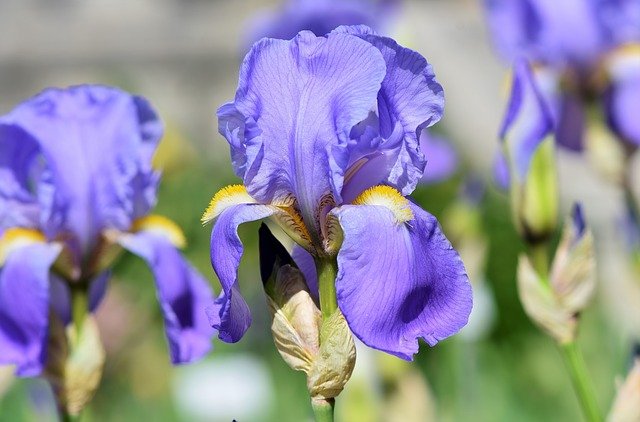Do Iris Flowers Change Color?

Iris has a fixed hue and cannot change into an entirely different color. However, there are many reasons why people might think the iris flowers change color. Maybe you were wondering if there was a scientific explanation for why some flowers turn a different color or if you were curious about the process. In this article, we’ll explore why iris flowers change color and explain the process in detail. Keep reading!
Table of Contents
Factors Why You Thought Iris Changed Color
Chemical Drift
Weedkiller is also a contributing factor. The use of herbicides such as Roundup near Iris plants can have a negative impact on the plants, causing the flowers to turn white and contort. In subsequent bloom seasons, if the flowers are able to recover from their exposure to these chemicals, the color will return to its original state.
Transplant Issues
Sometime in the past, you or someone else may have put irises in the landscape. It might not have bloomed anymore because it needed to be split up or because the place where it was growing wasn’t good for it. Rhizomes still alive can now be transplanted into the new place after the soil has been changed. This means that even a small piece of the old rhizome can come up from the ashes and start again. Even if the new plant turns out to be a different color, it could be because the older plant is stronger. The same thing can happen if you move your purple iris from a bed but move others of a different color. The following year, you might have a bed with a lot of different colors on it, too. Irises are valuable because they are always good at what they do. The same thing can make people nervous when they seem to come up in a different color.
Bees may have pollinated each other’s flowers, resulting in a seed pod. Eventually, the seeds from these crosses will fall into the bed, where they will grow and mature over time. Then, a new Iris is discovered blooming in your Iris patch during a subsequent bloom season. It’s easy for these to spread around the garden, and they’ll thrive in any area they find themselves in.
This can also happen when kids play during division or when the dog digs in the yard. It can take over the bed and change the color of the iris flower if a piece of rhizome ends up in another iris.

Temperature Changes
Color loss or fading is common whenever a plant is subjected to extreme heat or cold. As well as lack of or excess light, other factors such as a tree growing over the bed can have an impact on the color of your flowerbed. We don’t have any evidence that the pH or type of soil will cause iris to fade.
Maturity Level
When a deep purple iris reaches maturity and begins to die, it changes color. The majority of these options for changing the color of an iris flower will fade over time, and the plant will return to its normal flower tones.
Presence of Sport
In this case, the plant produces offspring that doesn’t resemble its parent. The sport may bloom in a completely different color in these cases. If chromosomes aren’t properly replicated in plants, they can change their DNA and become different types of plants, which is called “sport.” The mutation results in a part of the plant that looks and acts very different from the rest of the plant (genotype). Genes don’t change because of unusual growing conditions. They change because of an accident or a mutation. There are many times when the new trait can be passed down to the organism’s offspring.
